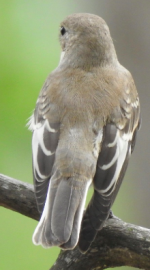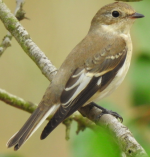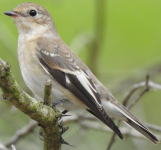aythya_hybrid
real name Jonathan Dean
Dear all. Just back from a superb birding trip to Romania with Sakertours. Lots of good birds but one conundrum was this Ficedula flycatcher sp in the Danube Delta. The group reached an ID conclusion at the time, but having done some more reading I am now wavering, so would be very interested to hear other peoples' thoughts. Rest assured I am under no illusions as to the potential obstacles to reaching a firm conclusion, but the attached pics show all the salient features, I think.






